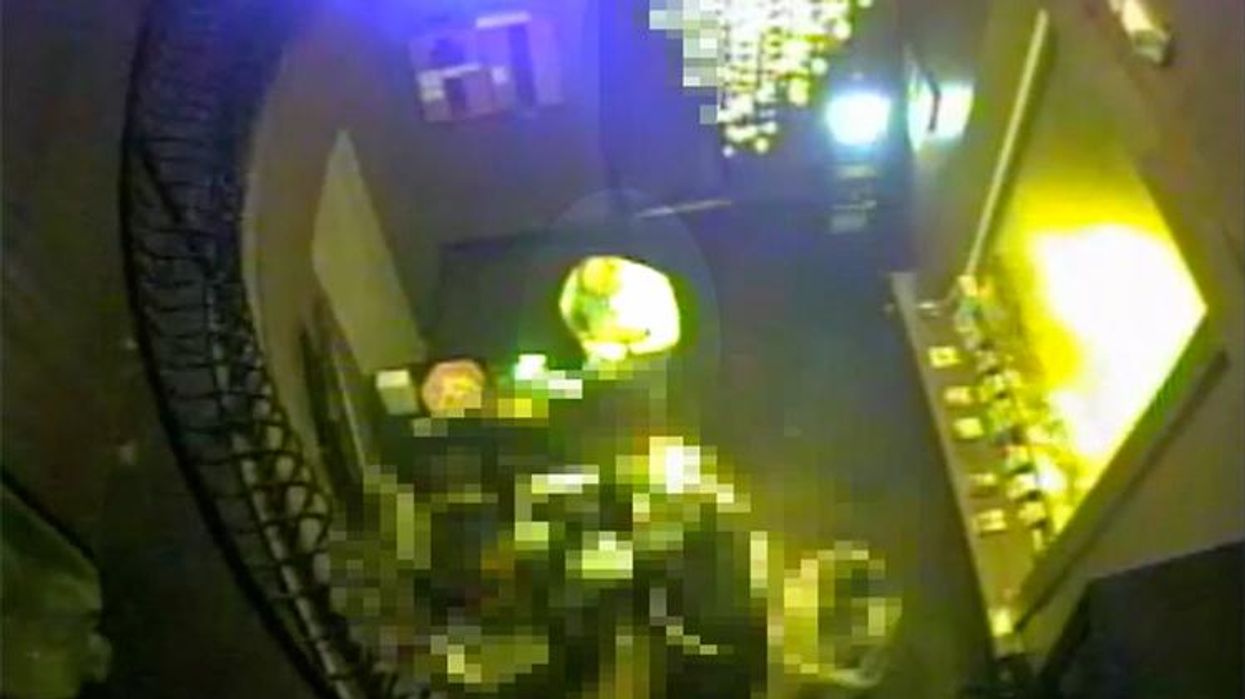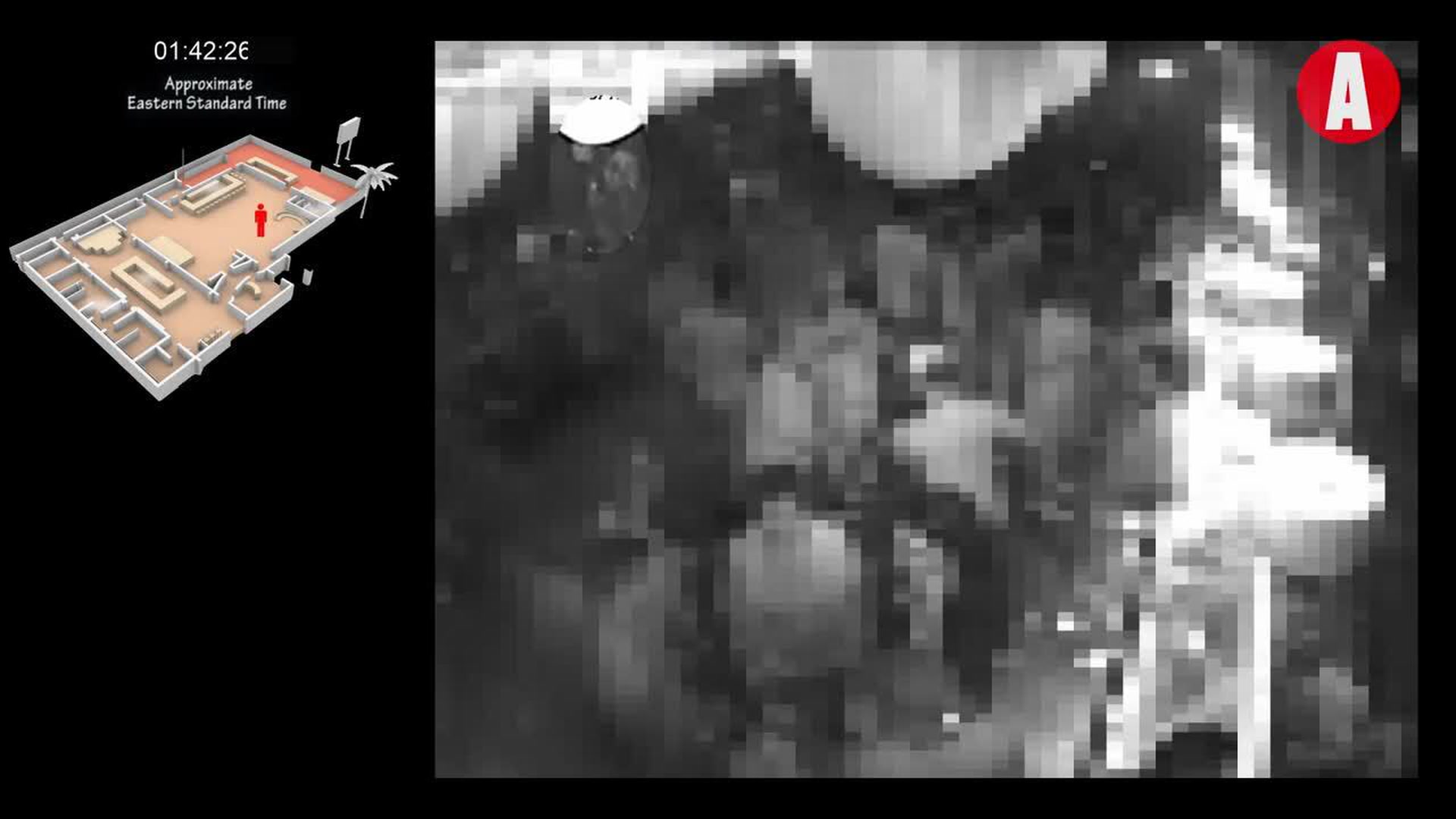
The Advocate is not publishing video of the attack, but there is concern others will.
March 16 2018 8:30 PM EST
By continuing to use our site, you agree to our Privacy Policy and Terms of Use.

The Advocate is not publishing video of the attack, but there is concern others will.

Those in an Orlando federal courtroom on Thursday for a trial involving the 2016 Pulse shooting saw surveillance images of the crime in progress. Today, media outlets could download and publish that video to the public at large. But the release of that footage for the first time upsets some of those close to the tragedy, and at least one Florida official says the images should never have been released for public consumption.
State Rep. Carlos Guillermo Smith (D-Orlando) says images depicting the murder of 49 innocent individuals at Pulse should never be available for wider viewing. "I get anxiety just thinking about watching the video, and I wasn't even there," says Guillermo Smith, an out lawmaker who has interacted closely with survivors of the shooting. "There is nothing that can come from showing that video to the public."
The timeline video depicts shooter Omar Mateen walking into Pulse around 1:41 a.m. then sitting at the main bar and looking around at the crowded gay club. He leaves the club around 1:54 a.m. and goes to a vehicle to retrieve a Sig Sauer semi-automatic rifle and a Glock pistol. From there, it shows Mateen shooting clubgoers and continues through the standoff with police where Mateen ultimately died. The video pixelates images of individuals in the club besides Mateen, but footage of the shooter remains clear, and as he shoots individuals who drop to the ground, there's little disguising the events taking place.
All video from the club has been unavailable to the public because it was part of an ongoing criminal investigation. Prosecutors showed the video in open court Thursday during a trial for Mateen's wife, Noor Salman, who faces life in prison if convicted of aiding a terrorist and obstructing justice.
Exhibits have become available for download by authorized media roughly 24 hours after being published in court. Defenders of public access say that remains a critical part in keeping trials fair.
"There's a long history in this country that courtroom proceedings are considered to be open, and that evidence is everyone's evidence," says Michael Barfield, a Florida-based public records expert. "Then the public can draw their own conclusion from the weight of the evidence."
Of course, just because everyone can see evidence doesn't mean everyone wants to. Brandon Wolf, a survivor of the Pulse shooting, says he will avoid any broadcast of the surveillance tape. "I don't think I need to relive what I saw very vividly the first time and see frequently in my nightmares," he says. He understands why the evidence was presented in trial and can appreciate the public interest. But he doesn't see benefit in making video available for public consumption. "It doesn't add much other than shock."
But media advocates say there are larger principles at play. Jen Nelson, a staff attorney for the Reporters Committee for Freedom of the Press, says the public release of evidence should be respected especially in criminal cases where citizens get put on trial by the government. "Everyone has a constitutional right to a free trial," Nelson says. "We believe a public trial ensures a fair trial. The public has an extremely strong interest in making sure the guilty are properly convicted and the innocent are properly released. And the Supreme Court has long recognized the press as a means of disseminating to the public what goes on in criminal trials."
That release, though, can re-traumatize victims of a crime, Guillermo Smith says, and the Pulse community has endured that repeatedly, whether it was the release of 911 calls or police bodycam footage, in the nearly two years since the June 2016 shooting. "This community has been forced to relive this gruesome tragedy multiple times in multiple ways in the last 21 months," he says. "This is just disgusting for them to have to be subject to."
Guillermo Smith supported a bill in the Florida legislature this year that would have barred the public release of images depicting the murder of individuals in a mass shooting. It passed in the state House but didn't get through the Senate. Yesterday, he issued a public plea on Facebook for media not to air unedited surveillance video.
The Advocate chose to release the early part of the video showing Mateen inside the club before the shooting, but will not release video of Mateen in the commission of his crime.
"The Advocate will never publish video of the Pulse massacre, even if it's a public record, because we believe the violence would only further victimize and endanger LGBT people," said Lucas Grindley, editor in chief of the magazine. "The Advocate is publishing a portion of the video from before the attack. It shows a man who spent several minutes surrounded by people, mostly queer and Latino, who he then chose to kill. This moment might inform history about the murderer's motivation."
Guillermo Smith for his part says that's too much. "I don't think you should show anything at all," he says. "I can only imagine what that would do to others, seeing that casual evil just sitting in a gay bar, a safe place, just drinking at a bar pretending to be one of us."
Barfield, though, says there's public importance to the footage being available, as painful to some individuals as it may be. Perhaps most obviously, seeing the relative ease for Mateen to kill so many people should be part of the ongoing debate about gun control. "In this era of heightened concern about gun violence and safety, that's a topic that is being debated by everyone these days," he says. "Seeing the damage and death and destruction that an AR-15 semi-automatic weapon can do, the public is entitled to see that to inform the debate on reasonable restrictions."
Guillermo Smith agrees it's important policy makers see that. It's part of why he read through autopsy reports on everyone killed at Pulse. But the public, which broadly supports restrictions on the sale of assault-style weapons, doesn't need this push. "The public is not the stakeholder that needs to be convinced," he says. "It's the politicians."
He also doesn't like the broadcast to spectators with a salacious interest in tragedy. And more importantly, he says, he doesn't want video of one crime to inspire more. "Why make it easier to sensationalize and glamorize this act of hate to someone who will then follow behind the Pulse shooter and replicate the carnage?," he says. "If it becomes available, know who else will get ahold of it? ISIS, who will use it to recruit new members. Or other sick twisted individuals and domestic terrorists who get ahold of this."
But Barfield says public transparency ultimately stands alone as a value that needs to take a higher priority than a right of privacy.
And Nelson says broader concerns come into play in federal court, where judges have broad authority on what can be released. "Clearly, the judge here authorized the release of exhibits and that determination was made," Nelson says. In this case, the video pixelated the features of victims, and the footage was edited from several cameras to express just those important points to a jury determining the act of terrorism on display.
Charlie Kirk DID say stoning gay people was the 'perfect law' — and these other heinous quotes